Time domain (delay) effects 03
Tape delay part 2 - the five parameters
- Video
- Script
Welcome to the second of our two tutorials on tape delay.
As we now know, the five primary parameters of time domain (delay) effects are ..
- delay time
- feedback
- modulation speed
- and modulation width
- and finally, hi-frequency decay
Caption - Delay time
The first parameter of time domain effects is delay time.
To create the delay the tape recorder is put into record mode and recording begins.
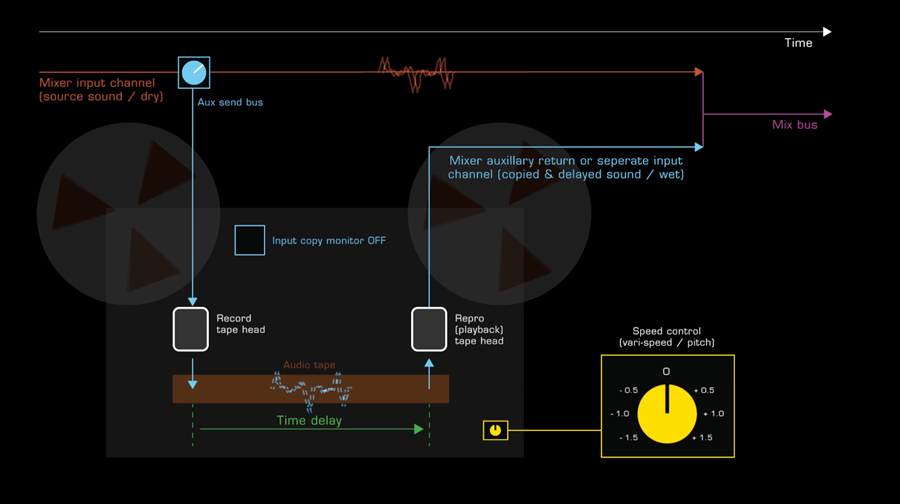
Note that the recorder must be set to monitor the delayed recorded signal from the reproduction head and not be in input monitor mode.
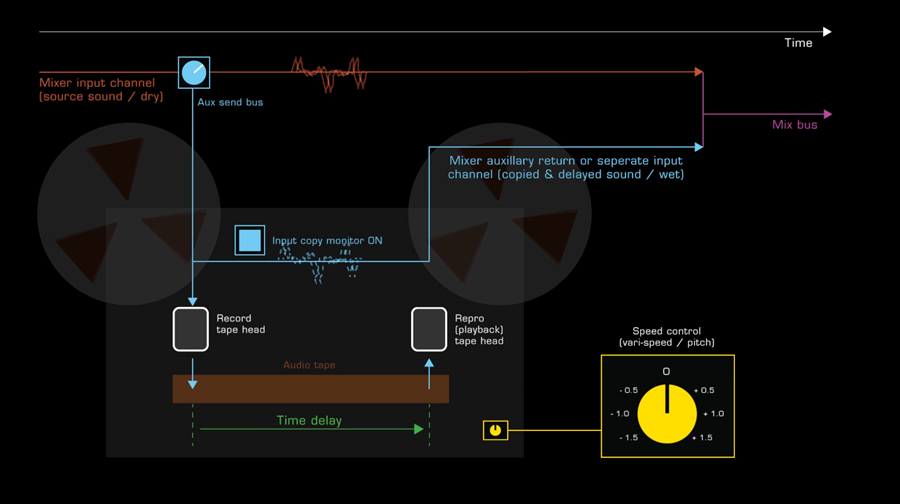
The 1st generation copied signal enters the tape machine and travels to the record head where it is recorded to tape. The tape then travels to the reproduction head which replays the signal and outputs and sends it back to the return channel on the mixer. The delay time can be controlled by setting the speed of the tape with a vari-speed control. This control may also be called the Speed or Pitch control.
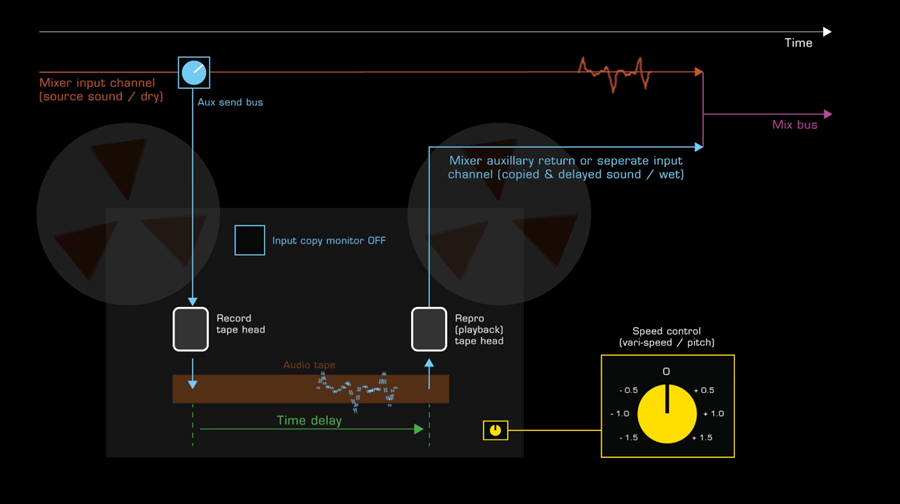
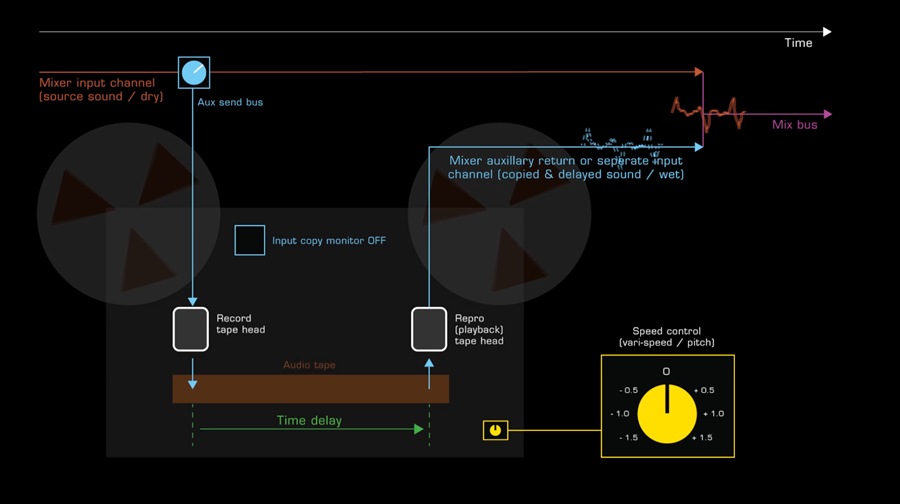
Caption - Feedback
The second parameter is feedback. Feedback is achieved by creating a 2nd generation copy of the 1st generation copy, and sending it back to the record head again. This is achieved by simply using the same axillary send bus on the return channel as that used on the source signal input channel.
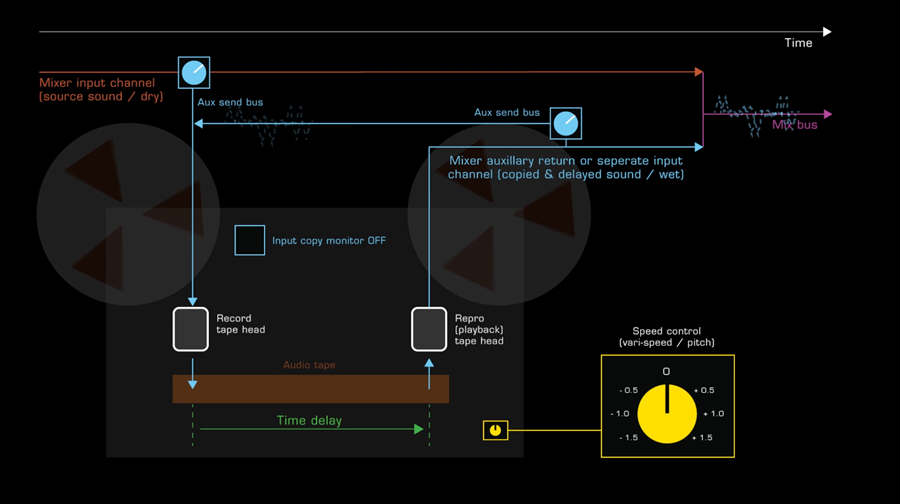
Whenever a new generation copy is made some quality is lost due to the electro magnetic and mechanical inefficiencies of the tape recording process. Interestingly this is most apparent in the loss of high frequencies, thus emulating the way real echoes in a space behave.
Caption - Modulation
To create a modulated effect, the tape recorders speed control must be repeatedly rotated back and forth for as long as the effect is required. Doing so introduces variations into the delay time and the pitch of the copied signal.
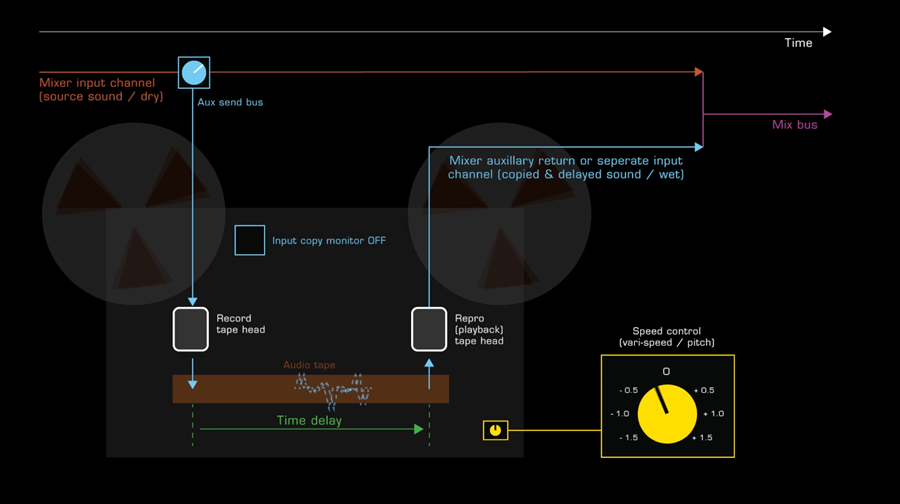
If the speed is increased after the signal is recorded but before it is replayed, the pitch of the copied signal rises. If the speed is decreased, the pitch falls.
Solid state analogue, digital hardware, and software delay plug-ins, usually employ a programmable LFO to simulate the movement of an engineers hand on the vari-speed control. The LFO creates a modulating control signal that can be sent to modulate pitch and delay time.
Caption - Modulation speed
Digram here
The speed with which the vari-speed control is rotated determines the setting of the modulation speed parameter. The speed will be slow for a phasing effect and fast for a deep flanging effect.
Modulation speed is also known as ..
- modulation rate
- and modulation frequency
Caption - Modulation width
The modulation width parameter is determined by how far the vari-speed control is rotated. Greater degrees of rotation will create deeper effects.
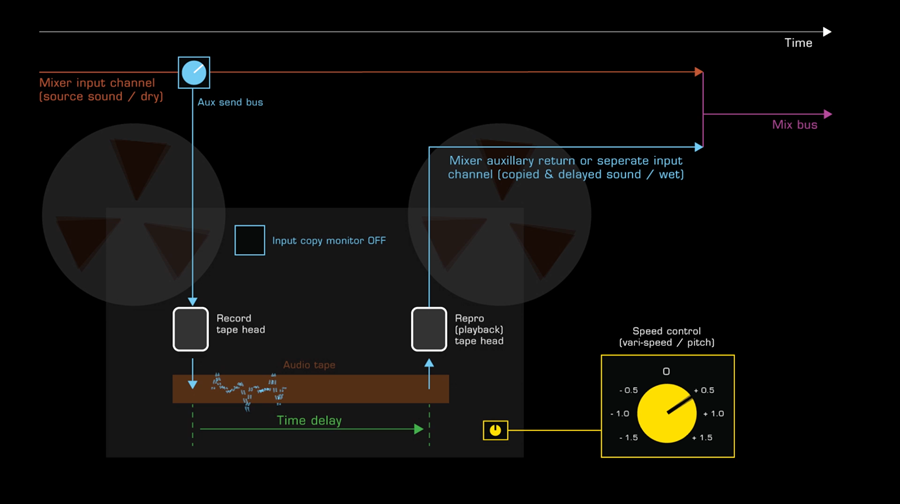
Modulation width is also known as ..
- modulation intensity
- modulation amount
- and modulation depth
Caption - Hi-frequency decay
When sound reflects around a space, such as a room, its hi frequencies are absorbed faster than its low frequencies. This causes the echoes to become increasingly duller.
The process of recording a sound to tape and then feeding it back to be recorded again, mimics the behaviour and character of echoes in a room, including the way in which high harmonic frequencies decay faster than low frequencies. This is due to the electro-mechanical inefficiencies of the recording process.
Digital delay lines create repeating effects by sampling a source signal and then replaying it repeatedly according to the feedback control setting. They therefore do not deteriorate in quality. To simulate natural and tape echo hi frequency decay, they usually provide a low pass hi-cut filter which can be applied to the copies.
Hi-frequency decay is also known as ..
- hi-frequency damping
- or hi-cut
Caption - Thanks for watching
The script for this video, with accompanying images, can be found at projectstudiohandbook.com
We suggest you subscribe at our YouTube channel, and join our mailing list at our website to receive notification of new videos, blog posts and subscriber only extras.
Thanks for watching.